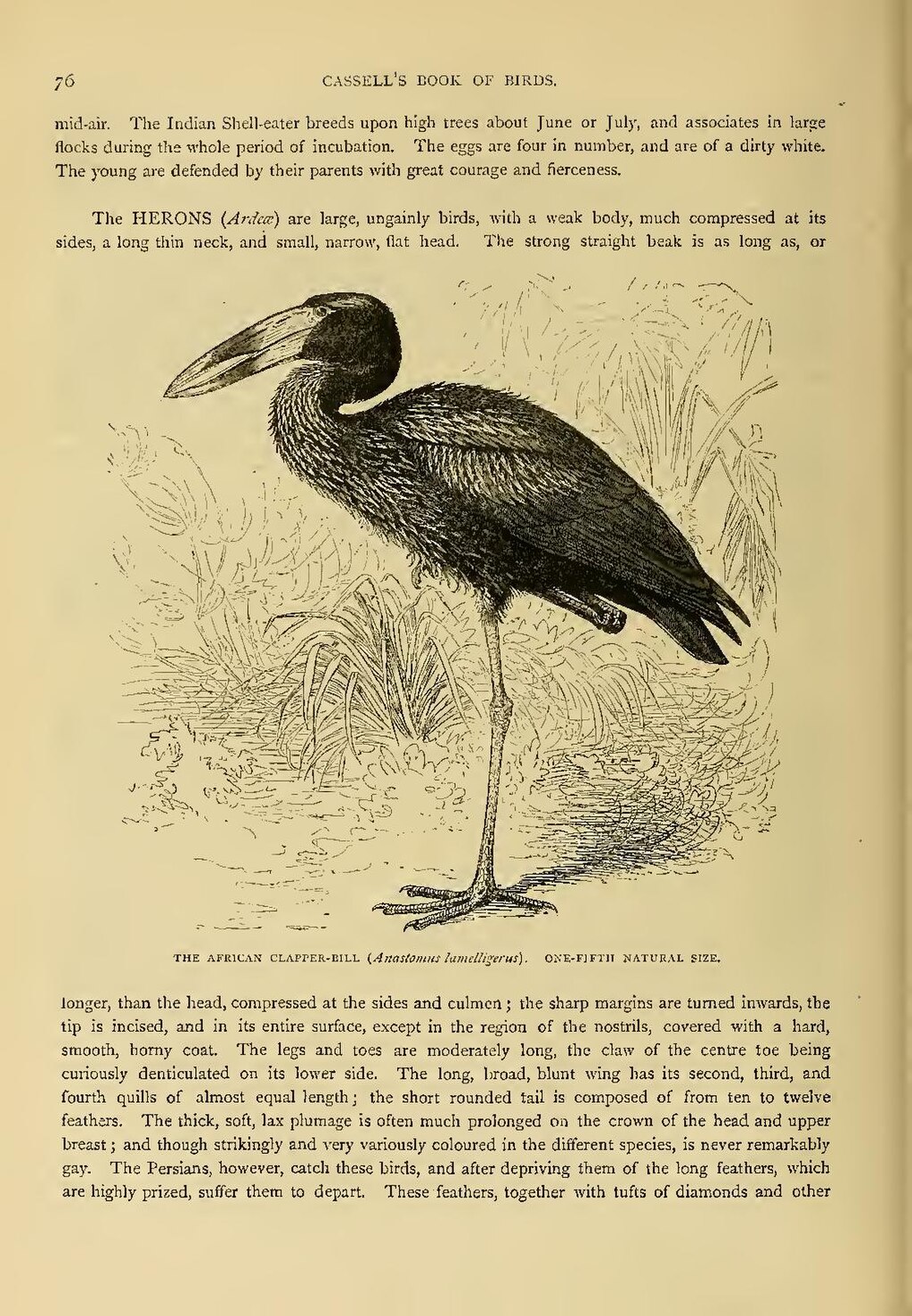mid-air. The Indian Shell-eater breeds upon high trees about June or July, and associates in large flocks during the whole period of incubation. The eggs are four in number, and are of a dirty white. The young are defended by their parents with great courage and fierceness.
An image should appear at this position in the text. To use the entire page scan as a placeholder, edit this page and replace "{{missing image}}" with "{{raw image|Cassell's book of birds (IA cassellsbookofbi04breh).pdf/94}}". Otherwise, if you are able to provide the image then please do so. For guidance, see Wikisource:Image guidelines and Help:Adding images. |
THE AFRICAN CLAPPER-BILL (Anastomus lamelligerus). ONE-FIFTH NATURAL SIZE.
The HERONS (Ardeæ) are large, ungainly birds, with a weak body, much compressed at its sides, a long thin neck, and small, narrow, flat head. The strong straight beak is as long as, or longer, than the head, compressed at the sides and culmen; the sharp margins are turned inwards, the tip is incised, and in its entire surface, except in the region of the nostrils, covered with a hard, smooth, horny coat. The legs and toes are moderately long, the claw of the centre toe being curiously denticulated on its lower side. The long, broad, blunt wing has its second, third, and fourth quills of almost equal length; the short rounded tail is composed of from ten to twelve feathers. The thick, soft, lax plumage is often much prolonged on the crown of the head and upper breast; and though strikingly and very variously coloured in the different species, is never remarkably gay. The Persians, however, catch these birds, and after depriving them of the long feathers, which are highly prized, suffer them to depart. These feathers, together with tufts of diamonds and other
